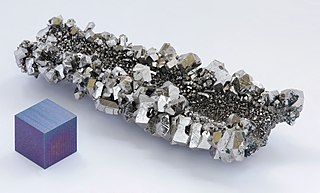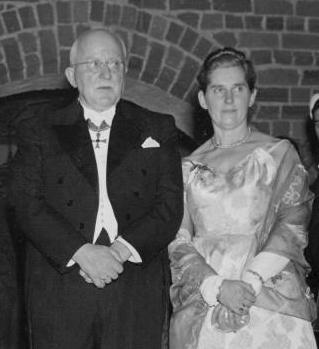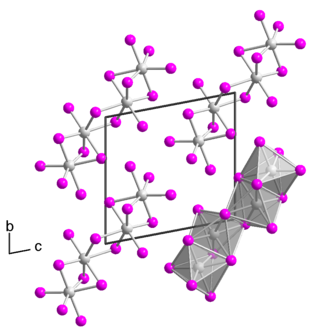Related Research Articles

Adolph Wilhelm Hermann Kolbe was a major contributor to the birth of modern organic chemistry. He was a professor at Marburg and Leipzig. Kolbe was the first to apply the term synthesis in a chemical context, and contributed to the philosophical demise of vitalism through synthesis of the organic substance acetic acid from carbon disulfide, and also contributed to the development of structural theory. This was done via modifications to the idea of "radicals" and accurate prediction of the existence of secondary and tertiary alcohols, and to the emerging array of organic reactions through his Kolbe electrolysis of carboxylate salts, the Kolbe-Schmitt reaction in the preparation of aspirin and the Kolbe nitrile synthesis. After studies with Wöhler and Bunsen, Kolbe was involved with the early internationalization of chemistry through work in London. He was elected to the Royal Swedish Academy of Sciences, and won the Royal Society of London's Davy Medal in the year of his death. Despite these accomplishments and his training important members of the next generation of chemists, Kolbe is best remembered for editing the Journal für Praktische Chemie for more than a decade, in which his vituperative essays on Kekulé's structure of benzene, van't Hoff's theory on the origin of chirality and Baeyer's reforms of nomenclature were personally critical and linguistically violent. Kolbe died of a heart attack in Leipzig at age 66, six years after the death of his wife, Charlotte. He was survived by four children.

Niobium is a chemical element with chemical symbol Nb and atomic number 41. It is a light grey, crystalline, and ductile transition metal. Pure niobium has a Mohs hardness rating similar to pure titanium, and it has similar ductility to iron. Niobium oxidizes in Earth's atmosphere very slowly, hence its application in jewelry as a hypoallergenic alternative to nickel. Niobium is often found in the minerals pyrochlore and columbite, hence the former name "columbium". Its name comes from Greek mythology: Niobe, daughter of Tantalus, the namesake of tantalum. The name reflects the great similarity between the two elements in their physical and chemical properties, which makes them difficult to distinguish.

Tantalum is a chemical element with the symbol Ta and atomic number 73. Previously known as tantalium, it is named after Tantalus, a figure in Greek mythology. Tantalum is a very hard, ductile, lustrous, blue-gray transition metal that is highly corrosion-resistant. It is part of the refractory metals group, which are widely used as components of strong high-melting-point alloys. It is a group 5 element, along with vanadium and niobium, and it always occurs in geologic sources together with the chemically similar niobium, mainly in the mineral groups tantalite, columbite and coltan.

Group 5 is a group of elements in the periodic table. Group 5 contains vanadium (V), niobium (Nb), tantalum (Ta) and dubnium (Db). This group lies in the d-block of the periodic table. This group is sometimes called the vanadium group or vanadium family after its lightest member; however, the group itself has not acquired a trivial name because it belongs to the broader grouping of the transition metals.

Resorcinol (or resorcin) is a phenolic compound. It is an organic compound with the formula C6H4(OH)2. It is one of three isomeric benzenediols, the 1,3-isomer (or meta-isomer). Resorcinol crystallizes from benzene as colorless needles that are readily soluble in water, alcohol, and ether, but insoluble in chloroform and carbon disulfide.
The Kolbe–Schmitt reaction or Kolbe process is a carboxylation chemical reaction that proceeds by treating phenol with sodium hydroxide to form sodium phenoxide, then heating sodium phenoxide with carbon dioxide under pressure, then treating the product with sulfuric acid. The final product is an aromatic hydroxy acid which is also known as salicylic acid.

Heinrich Rose was a German mineralogist and analytical chemist. He was the brother of the mineralogist Gustav Rose and a son of Valentin Rose. Rose's early works on phosphorescence were noted in the Quarterly Journal of Science in 1821, and on the strength of these works, he was elected privatdozent at the University of Berlin from 1822, then Professor from 1832.

Aurin, sometimes named rosolic acid or corallin is an organic compound, forming yellowish or deep-red crystals with greenish metallic luster. It is practically insoluble in water, freely soluble in alcohol. It is soluble in strong acids to form yellow solution, or in aqueous alkalis to form carmine red solutions.
Pelopium was the proposed name for a new element found by the chemist Heinrich Rose in 1845. The name derived from the Greek king and later god Pelops, son of Tantalus. During the analysis of the mineral tantalite, he concluded that it does contain an element similar to niobium and tantalum. The similar reactivity of niobium and tantalum complicated preparation of pure samples and therefore several new elements were proposed, which were later found to be mixtures of niobium and tantalum.
Chloral, also known as trichloroacetaldehyde or trichloroethanal, is the organic compound with the formula Cl3CCHO. This aldehyde is a colourless liquid that is soluble in a wide range of solvents. It reacts with water to form chloral hydrate, a once widely used sedative and hypnotic substance.
The Rosenmund reduction is a hydrogenation process in which an acyl chloride is selectively reduced to an aldehyde. The reaction was named after Karl Wilhelm Rosenmund, who first reported it in 1918.

Mellitic anhydride, the anhydride of mellitic acid, is an organic compound with the formula C12O9.

Christian Wilhelm Blomstrand was a Swedish mineralogist and chemist. He was a professor at the University of Lund from 1862-1895, where he isolated the element niobium in 1864. He developed an early version of the periodic table and made advances in understanding the chemistry of coordination compounds. Blomstrand published textbooks in chemistry and was well-known internationally for his scientific contributions.
Chemiker Zeitung was a German scientific journal with publications on general and industrial chemistry. It was established in 1877, and it issued in Köthen. From 1932 onwards, it was named Forschrittsbericht der Chemiker-Zeitung über die wichtigsten Gebiete der Chemie und chemischen Industrie and in 1950 the name changed to Deutsche Chemiker-Zeitschrift. Publication was suspended between 1945-1949. The journal was continued from 1959 to 1968 as the Chemiker-Zeitung, Chemische Apparatur. In 1992, Chemiker Zeitung was merged with Journal für praktische Chemie. Since 2001, Advanced Synthesis & Catalysis integrated both Chemiker Zeitung and Journal für praktische Chemie.
Ilmenium was the proposed name for a new element found by the chemist R. Hermann in 1847. During the analysis of the mineral samarskite, he concluded that it does contain an element similar to niobium and tantalum. The similar reactivity of niobium and tantalum complicated preparation of pure samples of the metals and therefore several new elements were proposed, which were later found to be mixtures of niobium and tantalum.
Wasium was the suggested name of a chemical element found by J. F. Bahr. The name was derived from the House of Vasa the Royal House of Sweden.

Magda Staudinger was a Latvian biologist and botanist who studied macromolecules with her husband Hermann Staudinger and their application to biology. She was acknowledged as his collaborator when he won the Nobel Prize for Chemistry, and she published seven volumes of his works after his death. She was awarded the Grand Order of the Latvian Academy of Sciences Medal for her contributions to the furtherance of science.
Georg Karl Brauer was a German chemist.

Tantalum(IV) iodide is an inorganic compound with the chemical formula TaI4. It dissolves in water to give a green solution, but the color fades when left in the air and produces a white precipitate.
References
- 1 2 Kobell, Fr. V. (1860). "Ueber eine eigenthümliche Säure, Diansäure, in der Gruppe der Tantal- und Niob- verbindungen". Journal für Praktische Chemie. 79: 291–303. doi:10.1002/prac.18600790145.
- ↑ V. Kobell, Fr. (1865). "Zur Geschichte der Unterniob- und Diansäure". Journal für Praktische Chemie. 94: 433–436. doi:10.1002/prac.18650940168.
- ↑ Rose, Heinr. (1861). "Ueber die Unterniobsäure". Annalen der Physik und Chemie. 188 (3): 468–485. Bibcode:1861AnP...188..468R. doi:10.1002/andp.18611880313.
- 1 2 3 Marignac, Blomstrand; H. Deville, L. Troost und R. Hermann (1866). "Tantalsäure, Niobsäure, (Ilmensäure) und Titansäure". Fresenius' Journal of Analytical Chemistry. 5 (1): 384–389. doi:10.1007/BF01302537. S2CID 97246260.
- ↑ Gupta, C. K.; Suri, A. K. (1994). Extractive Metallurgy of Niobium. CRC Press. pp. 1–16. ISBN 0-8493-6071-4.
- ↑ Marignac, M. C. (1866). "Recherches sur les combinaisons du niobium". Annales de chimie et de physique (in French). 4 (8): 7–75.
- ↑ Kobell, V. (1860). "Ueber eine eigenthümliche Säure, Diansäure, in der Gruppe der Tantal- und Niob- verbindungen". Journal für Praktische Chemie. 79 (1): 291–303. doi:10.1002/prac.18600790145.